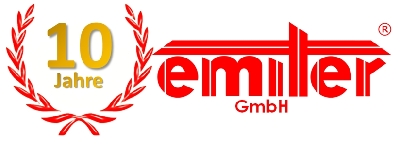

One common side effect associated with bi-specific antibodies is cytokine release syndrome (CRS). Journal for ImmunoTherapy of Cancer, 9(7), e002582.īi-specific antibodies, including T cell engagers, with their ability to engage two different targets, have long held out promises of extending the possibilities of monoclonal antibody therapeutics. Src/lck inhibitor dasatinib reversibly switches off cytokine release and T cell cytotoxicity following stimulation with T cell bispecific antibodies.

M., Marrer-Berger, E., Boetsch, C., Walz, A.-C., Pulko, V., Sam, J., Challier, J., Ferlini, C., Odermatt, A., Umaña, P., Bacac, M., & Klein, C. Leclercq, G., Haegel, H., Schneider, A., Giusti, A.

Src/lck inhibitor dasatinib reversibly switches off cytokine release and T cell cytotoxicity following stimulation with T cell bispecific antibodies 171.Publications from July 2021 - September 2021 Featured Articles Das Kulturlexikon zum Dritten Reich: Wer war was vor und nach 1945. Die Universität für Musik und darstellende Kunst Wien im Kulturleben des Nationalsozialismus.
Maximilian Haas: Die Gottbegnadeten-Liste (BArch R 55/20252a) in: Juri Giannini, Maximilian Haas und Erwin Strouhal (Hrsg.): Eine Institution zwischen Repräsentation und Macht. Fritz von Graevenitz (1892–1959), sculptor and painter. Ludwig Dettmann (1865–1944), war painter (member of the Berlin Secession). Claus Bergen (1885–1964), marine painter. Karl-Heinz Stroux (1908–1985), actor and director. Jürgen Fehling (1885–1968), director and actor. Raoul Aslan (1886–1958),director and actor. Gerhard Taschner (1922–1976), violinist. Günther Ramin (1898–1956), organist and choirmaster. Walter Morse Rummel (1887–1953), pianist. Hans Beltz (1897–1977), pianist and musical pedagogue. Wilhelm Furtwängler (1886–1954) (removed on Decembecause of his relationships with German resistance. Börries Freiherr von Münchhausen (1874–1945). There was also an extended list, the so-called "Führerliste" that included "God-gifted artists" who were not to be drafted but worked as "Künstler im Kriegseinsatz" (artists in the war effort). Hanns Johst (1890–1979), "Reichskultursenator"įurther listed artists on the "Führerliste". history painter Arthur Kampf (1864–1950). painter and illustrator Hermann Gradl (1883–1964). sculptor Arno Breker (1900–1991), named as "Reichskultursenator" (Reich Culture Senator). architect and critic Paul Schultze-Naumburg (1869–1949). architect Hermann Giesler (1898–1987), "Reichskultursenator". architect Leonhard Gall (1884–1952), "Reichskultursenator". The only foreigner (Ausländer) on the list was Dutch actor Johannes Heesters. Many of the cultural figures appearing on the list are no longer widely remembered but there are exceptions, including a number of renowned classical musicians such as the composers Richard Strauss, Hans Pfitzner, Carl Orff and Norbert Schultze, the orchestral conductors Wilhelm Furtwängler and Herbert von Karajan, and the Wagnerian baritone Rudolf Bockelmann. They were to be protected as part of his propaganda film efforts, which persisted through the end of the war (and culminating in the expensive final UFA production Kolberg, released in January 1945). Goebbels included about 640 motion picture actors, writers and directors on an extended version of the list. Of that number, 24 were named as especially indispensable they thus became the equivalent of National Socialism's "national treasures". A total of 1,041 names of artists, architects, music conductors, singers, writers and filmmakers appeared on the list. Each listed artist received a letter from the Nazi Propaganda Ministry which certified his or her status. The list exempted the designated artists from military mobilisation during the final stages of World War II. The list was assembled in September 1944 by Joseph Goebbels, the head of the Ministry of Public Enlightenment and Propaganda, and Germany's supreme leader Adolf Hitler. The Gottbegnadeten-Liste ("God-gifted list" or "Important Artist Exempt List") was a 36-page list of artists considered crucial to Nazi culture.







 0 kommentar(er)
0 kommentar(er)
